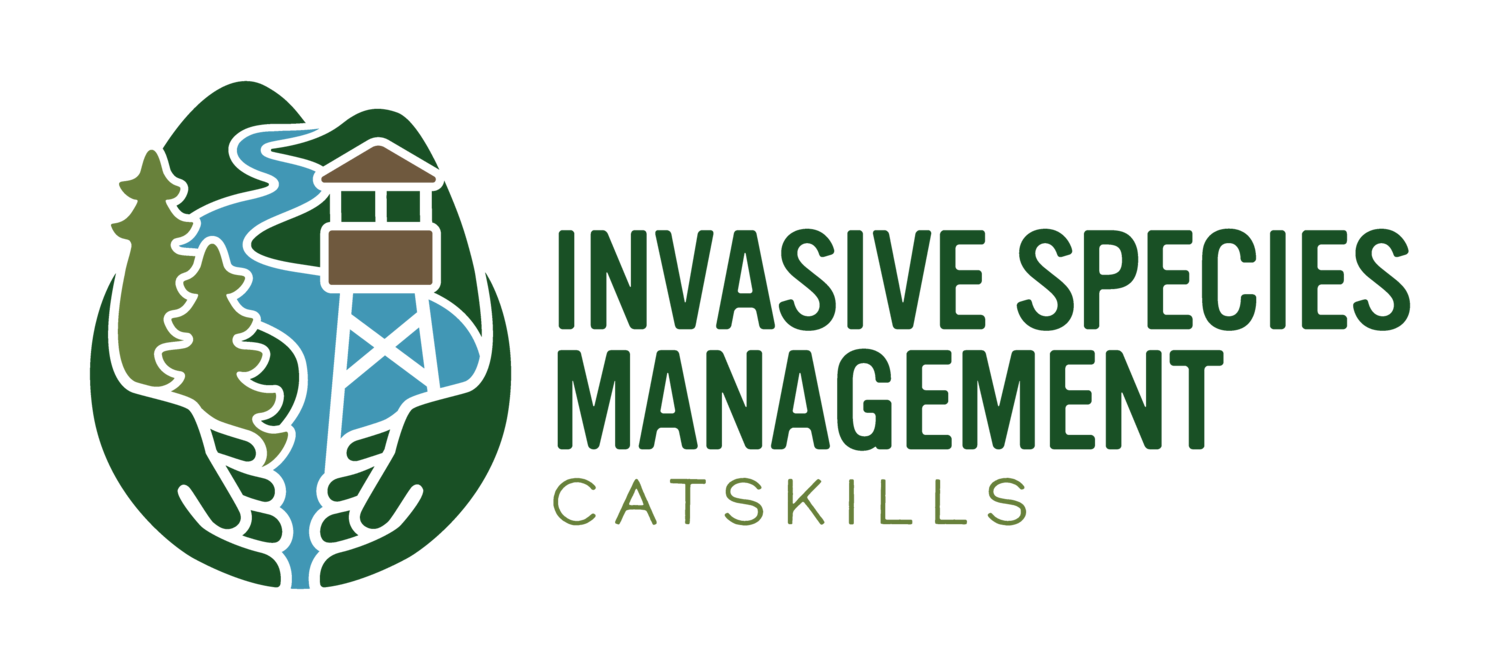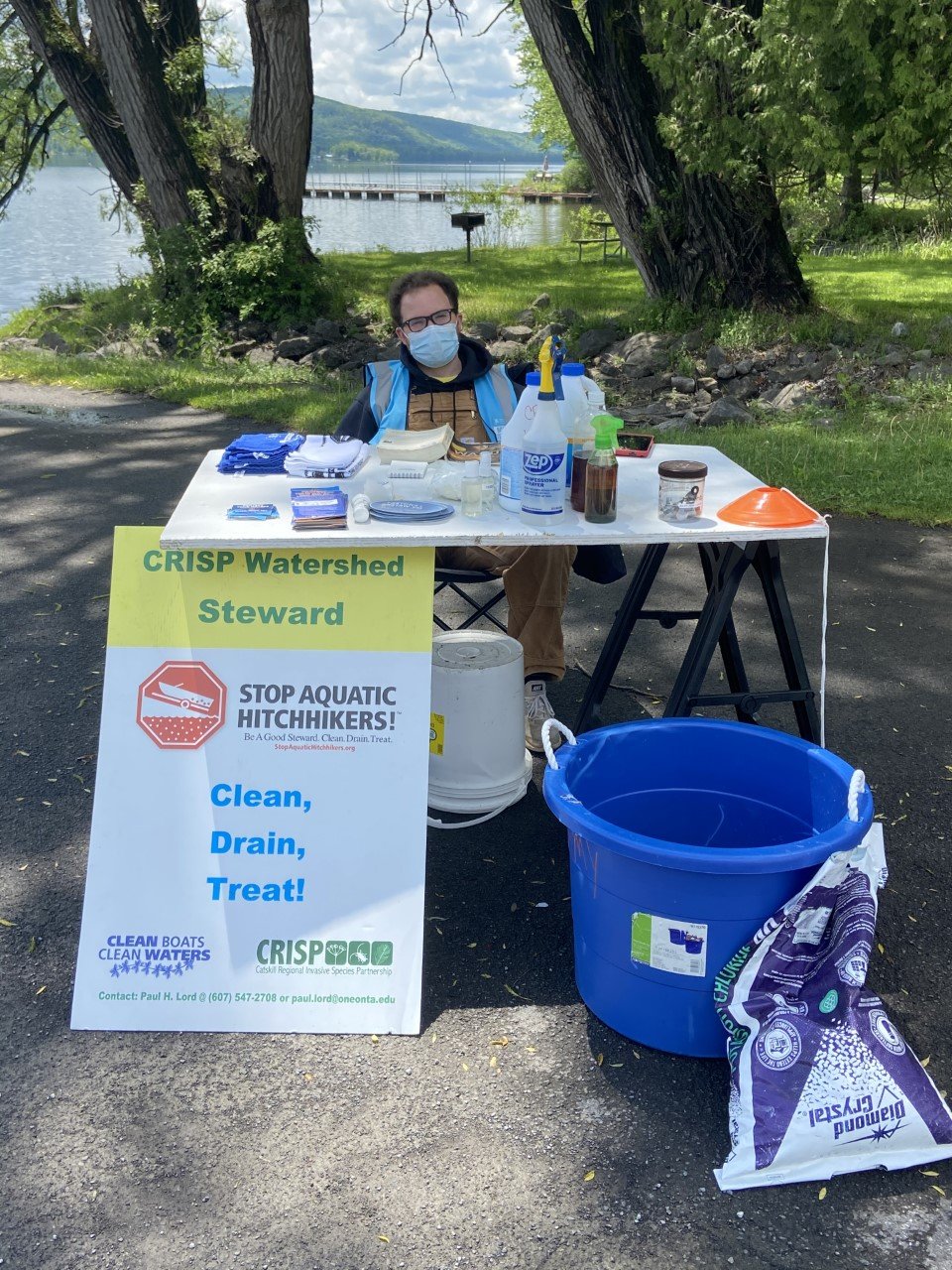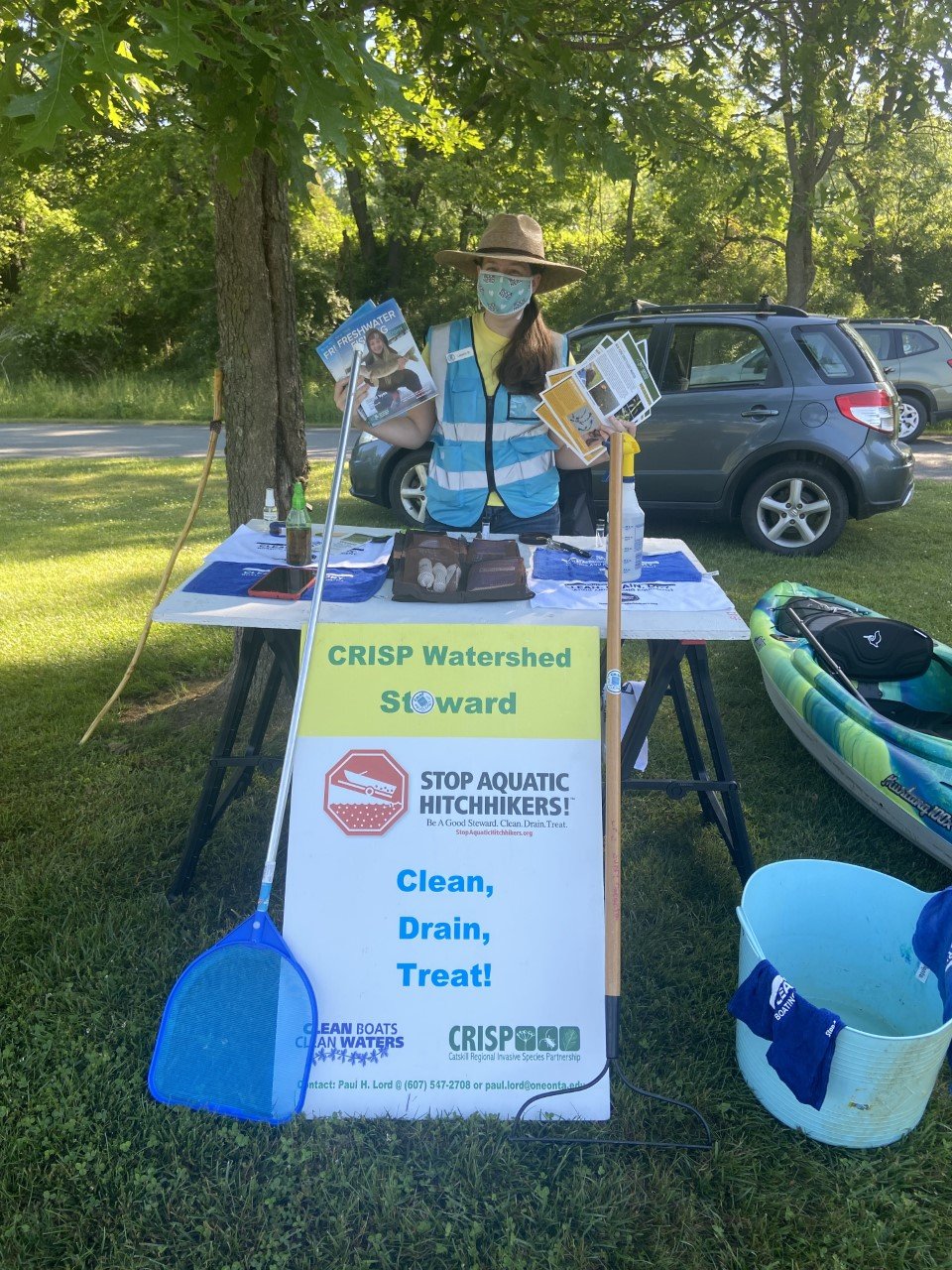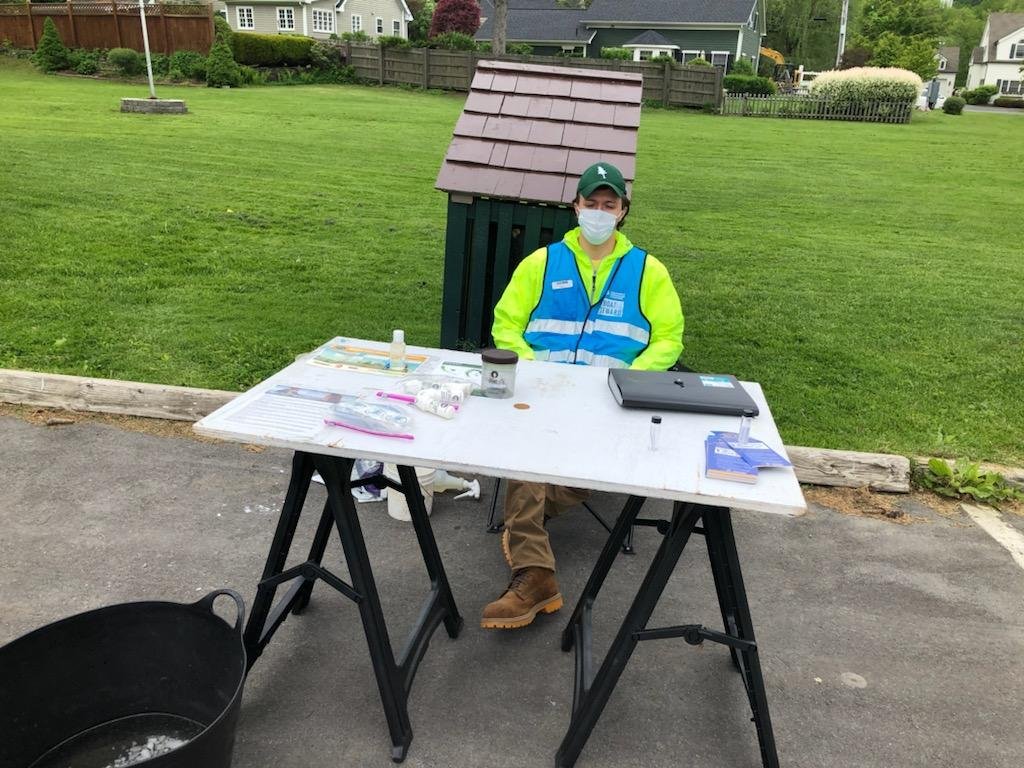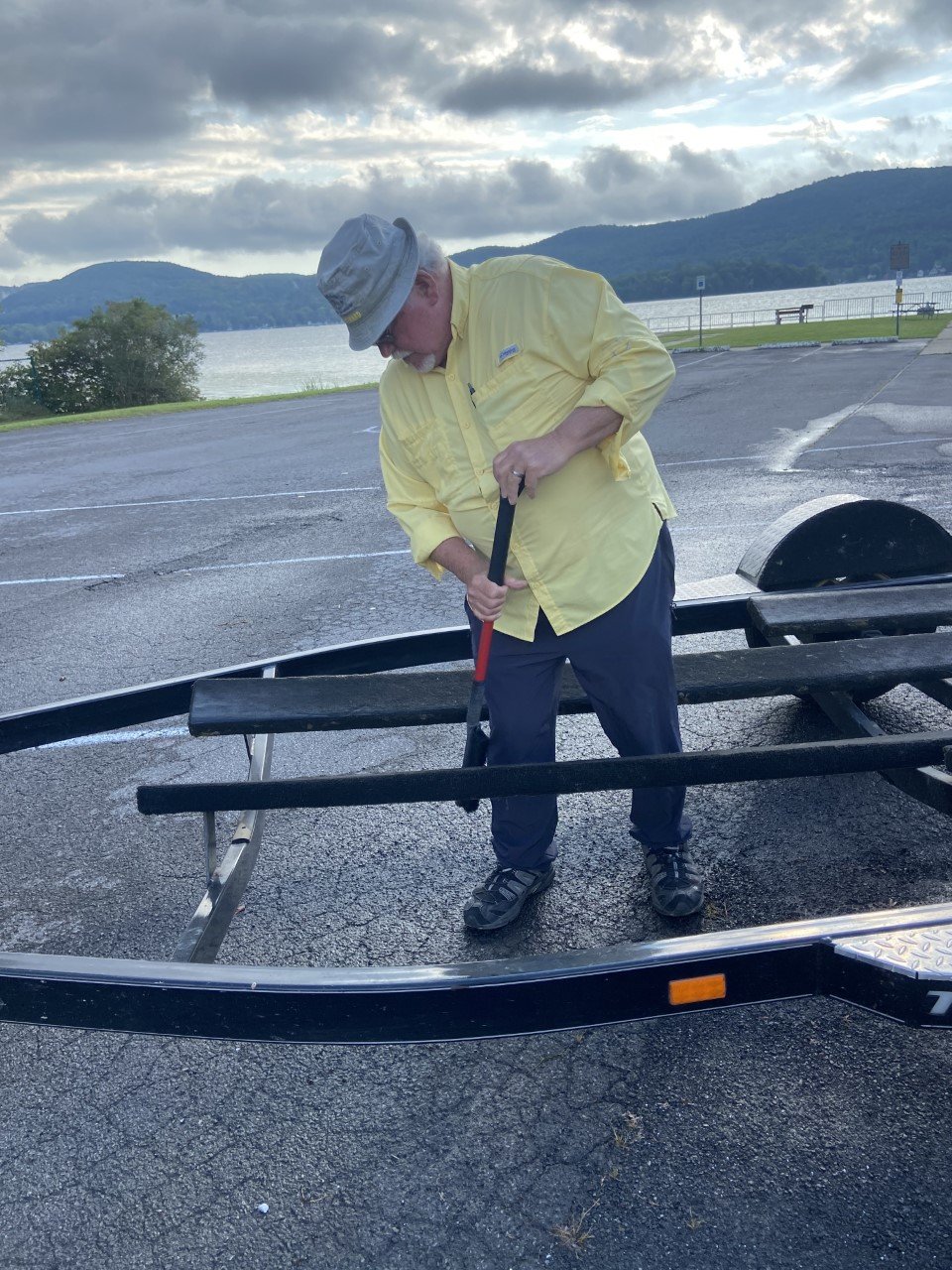Clean, Drain, Dry? We Know Who Can Help!
Have you been to the launch lately?
Maybe you’ve seen some people hanging around in a blue vest with some odd equipment? Don’t be afraid! Stop by and say ‘Hello!’ to our NYSDEC Watercraft Inspection Stewards!
NYSDEC Stewards are here to help
NYSDEC Watercraft Inspection Stewards are posted at public boat and fishing launches throughout the CRISP region and can be found throughout NY. Watercraft inspection stewards are there to help you Clean, Drain, and Dry your watercraft, trailer, and gear prior to launching to help stop the spread of aquatic invasive species!
What can you do to help stop the spread of aquatic invasive species if stewards aren’t around?
Just Remember Clean, Drain, and Dry!
Clean any visible mud, plants, fish, or animals before transporting boats, trailers, and equipment.
Discard materials at least 50’ away from the launch or into invasive species disposal stations installed at many NYS boat launches.
Do not wash or release material into a waterbody!Some invasive species, such as zebra or quagga mussels, can be difficult to remove from a boat hull. They first need to be killed by water or steam that is 140 degrees F,
then removed by a brush or pressure washer. Visit a decontamination station for a free boat wash.Properly dispose of unused bait in trash cans or the AIS disposal stations.
Never release unused worms, learn more here.
Drain all water-holding compartments including ballast tanks, live wells, and bilge areas.
Drain your boat before you leave an access site.
Including your motor, live well, bait well, and any other area that collects or holds water!
Be sure to drain boat ballast tanks if your water ski or wakeboard has them.
Dry boats, trailers, and all equipment before use in another waterbody. The most effective way to ensure that no invasive species are transported to a new body of water
is to completely dry your boating and fishing equipment.Drying times vary significantly depending on the type of equipment, air temperature, and relative humidity.
While the outside of a boat will dry relatively quickly, bilge, live wells, and other parts of a boat not reached by the sun or lacking good air circulation
will take additional time to dry completely.A minimum of 5-7 days of drying time in dry, warm conditions (no rain!) is recommended.
Disinfect anything that came into contact with water if it cannot be dried before reuse.
Hot water is an effective disinfection agent for all aquatic invasive species and fish diseases. Soak all equipment in water that is at least 140 degrees F for 30 seconds.
KCl is a quick and efficient way to decontaminate boating and fishing equipment when a decon station or hot water is not available.
